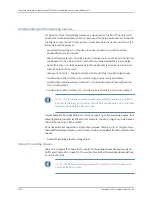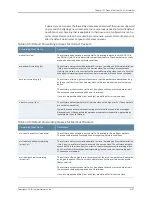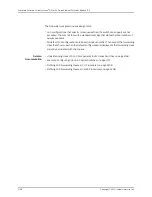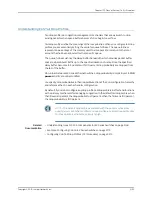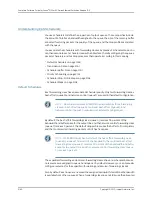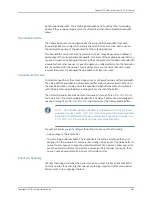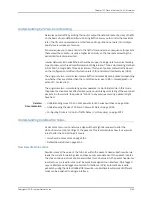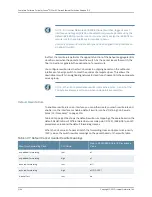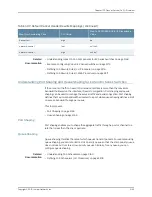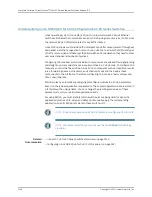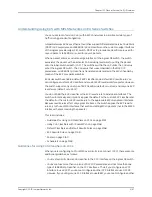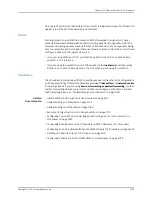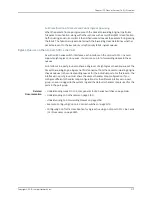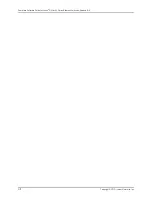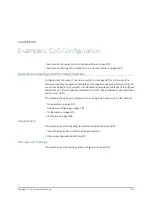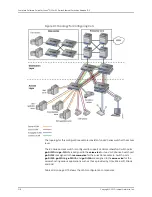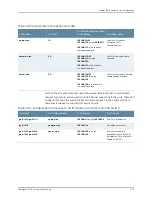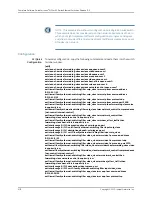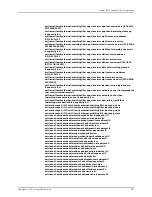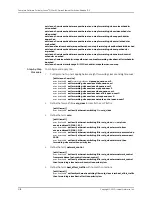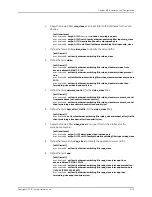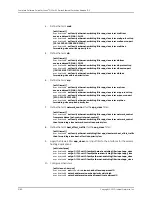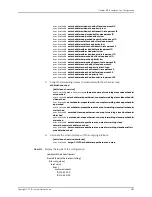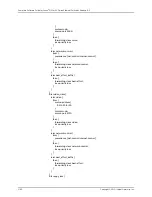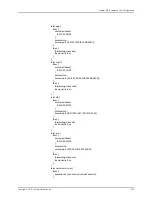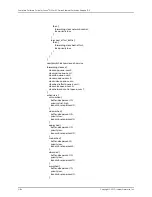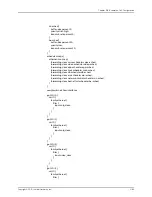
Understanding CoS Queues on the 40-port SFP+ Line Card on EX8200 Switches
The 40-port SFP+ line card is an oversubscribed 10-Gigabit Ethernet line card for the
Juniper Networks EX8200 Ethernet Switches. The 40 ports on the line card are divided
into 8 port groups, with each port group containing 5 ports. The ports in a port group
share 10 gigabits of bandwidth. Because the port groups share bandwidth, class-of-service
(CoS) ingress and egress queues are handled differently on the 40-port SFP+ line card
than on other line cards for EX8200 switches.
This topic describes:
•
Ingress Queues on the 40-port SFP+ Line Card on page 3170
•
Egress Queues on the 40-port SFP+ Line Card on page 3171
Ingress Queues on the 40-port SFP+ Line Card
Ingress packet classification and queuing occurs in two steps:
•
Preclassification of Packets and Port Ingress Queuing on page 3170
•
Full Classification of Packets and Fabric Ingress Queueing on page 3171
Preclassification of Packets and Port Ingress Queuing
Packets entering the ports on a port group are sent to one of two ingress queues. These
ingress queues are used to schedule the traffic from the port group into the Packet
Forwarding Engine.
•
Low priority queue—Each interface in a port group has one low priority queue. Traffic
on these queues is scheduled using the shaped deficit weighted round-robin (SDWRR)
algorithm, with each interface’s queue in the port group having an equal weight.
•
High priority queue—The interfaces in a port group share a single high priority queue.
Traffic on this queue is scheduled by strict-high priority.
For the purpose of port ingress queuing, packets are classified only by behavior aggregate
(BA) classification. To control which ingress queue the packets get sent to, you configure
a BA classifier on the physical port and specify switch fabric priorities for the forwarding
classes. On EX8200 switches, fabric priority determines the priority of packets ingressing
the switch fabric. For the 40-port SFP+ line card, fabric priority also determines the priority
of packets ingressing the port group.
By default, the fabric priority for all forwarding classes is low. To direct packets belonging
to a forwarding class to the high priority ingress queue, set the fabric priority to high for
that class.
Critical network-control packets are handled differently from other packets. Instead of
using the BA classifier to classify them, the switch always sends critical network-control
packets to the high priority queue. This handling ensures that these packets are not
dropped because of congestion on the oversubscribed ports.
Copyright © 2010, Juniper Networks, Inc.
3170
Complete Software Guide for Junos
®
OS for EX Series Ethernet Switches, Release 10.3
Summary of Contents for JUNOS OS 10.3 - SOFTWARE
Page 325: ...CHAPTER 17 Operational Mode Commands for System Setup 229 Copyright 2010 Juniper Networks Inc ...
Page 1323: ...CHAPTER 56 Operational Mode Commands for Interfaces 1227 Copyright 2010 Juniper Networks Inc ...
Page 2841: ...CHAPTER 86 Operational Commands for 802 1X 2745 Copyright 2010 Juniper Networks Inc ...
Page 3367: ...CHAPTER 113 Operational Mode Commands for CoS 3271 Copyright 2010 Juniper Networks Inc ...
Page 3435: ...CHAPTER 120 Operational Mode Commands for PoE 3339 Copyright 2010 Juniper Networks Inc ...
Page 3529: ...CHAPTER 126 Operational Mode Commands for MPLS 3433 Copyright 2010 Juniper Networks Inc ...

